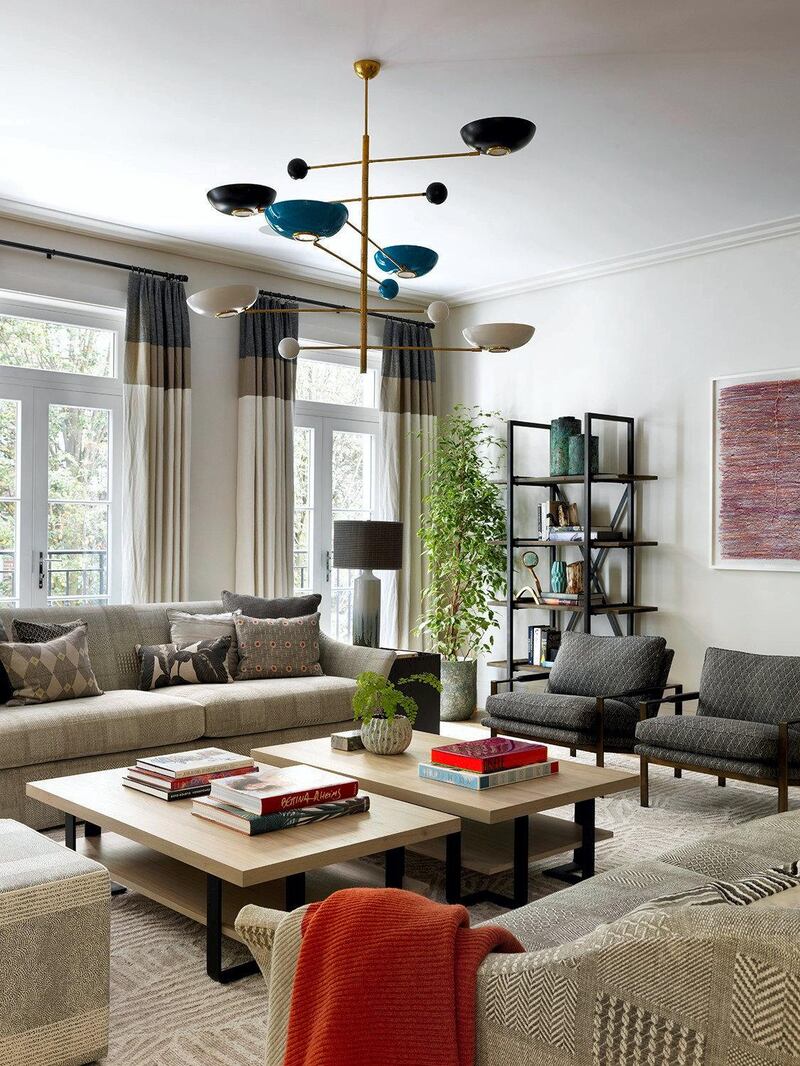A home should not only be visually inspiring, but also a multilayered sensory experience. Think a combination of harmonious colours, intuitive lighting, tactile textures and evocative fragrances to create enveloping spaces that elevate the experience of our daily lives.
It is important to create homes that blend comfort, glamour and style, yet are ultimately places you want to spend time in, being surrounded by things you love, which work for you and reflect your lifestyle. I like to create sensory spaces that appeal to sight, touch, sound, smell and taste as an immersive experience that is felt in every room. Here are a handful of ways to do just that.
Sight: Each design element ought to create a visual feast – from a richly coloured palette and carefully chosen patterns for soft furnishings, to exquisite detailing and unique artwork to anchor each room. In every project, I combine a harmonious blend of colours and correctly scaled pieces that invite a feeling of calm and flow from the moment you look at them. Many of these pieces are one-of-a-kind and designed in-house, whether that is a rug or piece of furniture, to fit the space exactly.
Touch: This is one of the most important aspects of any design scheme, so having interesting tactile textures is always at the forefront of my interiors. I use beautifully crafted objects, exquisite finishes, layered fabrics and luxurious wallcoverings to create depth. I also love sumptuous cut velvets for upholstery, deeply grained woods, hammered metallics, vintage mirrors, coloured marble, luxurious gemstone finishes and raffia wall coverings. A luscious velvet sofa or unusual bronze sculpture for a coffee table will add richness to the surroundings and feel wonderful to touch.
Sound: When it comes to bringing this sense into a home, spaces should be one of two things. Either a room should be a cocoon of comfort, with luxurious upholstered walls adding a layer of texture and insulated from outside noise, or you bring sound home with a terrific state-of-the-art system. While technology is important, ensure that it is a functional but unobtrusive feature, and not a focal point in the room.
Smell: Smell is an important design element. Use fresh flowers and plants as much as possible to bring a touch of nature into the home. Scented candles also create warmth and appeal; the flickering light of the candle and its comforting smells contribute to a welcoming atmosphere. Smell is powerfully evocative of memory, often appealing to our emotions. For example, I created my own fragrance with Rachel Vosper, which has hints of citrus, tobacco and fresh plants that remind me of Miami, my home town.
Taste: The kitchen is another key aspect when creating a sensory design experience. Plan cooking and dining spaces that have a warm, welcoming and convivial ambience. For me, the kitchen is where families come together for meals, drawn in by the smells and promise of delicious flavours, therefore it must be as beautifully decorated and comfortable as the other rooms in the house.






